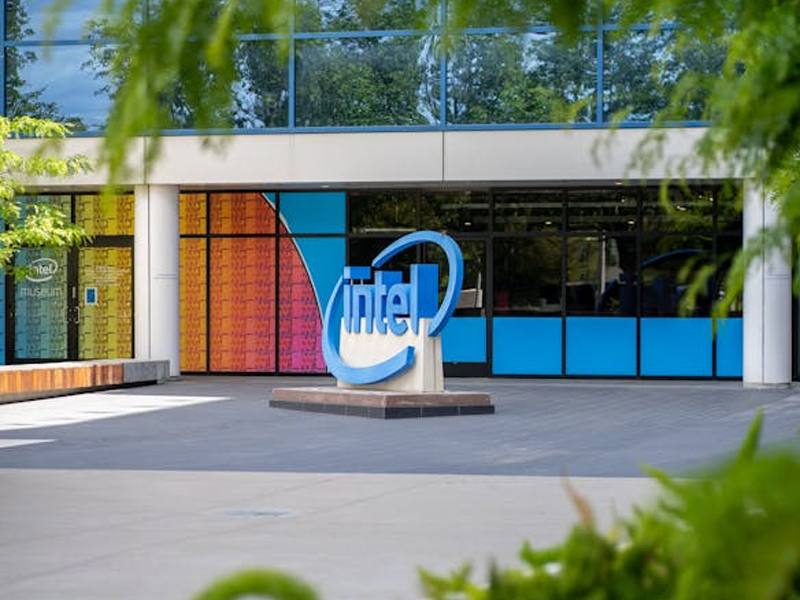Boeing Bird of Prey – A Top Secret Technological Project of U.S Air Force
Uncategorized
 Very little information has been revealed about the Bird of Prey, a secretly developing aircraft under the surveillance of the U.S Air Force. The engineers at McDonnell Douglas Phantom Works coined the name “Bird of Prey” from the physical appearance of the aircraft. It has featured wings of gull-shape but not much information could be acquired from the company or the spokesmen of Air Force.
Any reports on Bird of Prey, is cited from the official summary of Air Force and Boeing sites. The project was first ushered in 1992 when the development cost was around $67 million. Then finally in 1997, McDonnell Douglas came up with Boeing. But the project was formally dismantled in 2002.
The Boeing YF-118G Bird of Prey had been attributed with the some strikingly exclusive features. It is about 47 feet long with a height of 9.3 feet. The wings of the Bird of Prey expanded across 23 feet, with a ceiling of 20,000 feet. It could fit in only one crew and consumed a power of 1 Pratt & Whitney JT15D-5C. It exerts a thrust of 3,200 pounds. But the maximum take-off weight cannot exceed 7,400 pounds. The rate of climb of this aircraft is 3,000 fpm.
The aircraft was designed with a secret and covert technology. The manufacturing procedure and process along with the design completely reduce the signal complications of the panel which included infrared, radar, visual communications and acoustic. It was pretty difficult to perceive the signals with a wide range of electronic feelers. McDonnell Douglas was planning to construct a prototype to sharpen its possibilities of achieving any government-aided contract with its efficiency in any competition. The structural aspect of the plane was of industrial standards. Roughly $67 billion can be considered too generous to make a hole in the pocket of Government revenue but in general the deal is worth making. The development cost of recent day airplane designs duly includes millions of dollars. In recent days, the most expensive airplane may be worth more than a billion dollars.
This structure and configuration uses a very moderate flight system. The control panel of the plane is manual with no such computing issues. This was done to fit it in budget. The plane features mechanical actuators along with hydraulic power link. This helps in elevation of the inner wings as well as rudderons on the outer wings which in turn helps in roll control. The cockpit designing followed COTS- “Commercial off the Shelf.” It is similar to any normal private jet-crafts. The tri-wheeler landing gear was imitated from the Queen Air dual-engine air-crafts and the famous Beechcraft King Air.
The propulsion movement of the Bird of Prey also featured COTS- the Pratt & Whitney JT15D-5C turbo engine fan that was used in the Cessna Citation business plane. The engine had been the prototype with an operating speed of 300mph and ceiling of 20,000 feet. These unpresumptuous capabilities were enough for the basic test purpose.
In recent days, only one Bird of Prey is still present which is now displayed at the National Museum of the U.S Air Force in Dayton, Ohio. This very aircraft had been a part of 40 dangerous missions which were accomplished in just a span of three years.
Very little information has been revealed about the Bird of Prey, a secretly developing aircraft under the surveillance of the U.S Air Force. The engineers at McDonnell Douglas Phantom Works coined the name “Bird of Prey” from the physical appearance of the aircraft. It has featured wings of gull-shape but not much information could be acquired from the company or the spokesmen of Air Force.
Any reports on Bird of Prey, is cited from the official summary of Air Force and Boeing sites. The project was first ushered in 1992 when the development cost was around $67 million. Then finally in 1997, McDonnell Douglas came up with Boeing. But the project was formally dismantled in 2002.
The Boeing YF-118G Bird of Prey had been attributed with the some strikingly exclusive features. It is about 47 feet long with a height of 9.3 feet. The wings of the Bird of Prey expanded across 23 feet, with a ceiling of 20,000 feet. It could fit in only one crew and consumed a power of 1 Pratt & Whitney JT15D-5C. It exerts a thrust of 3,200 pounds. But the maximum take-off weight cannot exceed 7,400 pounds. The rate of climb of this aircraft is 3,000 fpm.
The aircraft was designed with a secret and covert technology. The manufacturing procedure and process along with the design completely reduce the signal complications of the panel which included infrared, radar, visual communications and acoustic. It was pretty difficult to perceive the signals with a wide range of electronic feelers. McDonnell Douglas was planning to construct a prototype to sharpen its possibilities of achieving any government-aided contract with its efficiency in any competition. The structural aspect of the plane was of industrial standards. Roughly $67 billion can be considered too generous to make a hole in the pocket of Government revenue but in general the deal is worth making. The development cost of recent day airplane designs duly includes millions of dollars. In recent days, the most expensive airplane may be worth more than a billion dollars.
This structure and configuration uses a very moderate flight system. The control panel of the plane is manual with no such computing issues. This was done to fit it in budget. The plane features mechanical actuators along with hydraulic power link. This helps in elevation of the inner wings as well as rudderons on the outer wings which in turn helps in roll control. The cockpit designing followed COTS- “Commercial off the Shelf.” It is similar to any normal private jet-crafts. The tri-wheeler landing gear was imitated from the Queen Air dual-engine air-crafts and the famous Beechcraft King Air.
The propulsion movement of the Bird of Prey also featured COTS- the Pratt & Whitney JT15D-5C turbo engine fan that was used in the Cessna Citation business plane. The engine had been the prototype with an operating speed of 300mph and ceiling of 20,000 feet. These unpresumptuous capabilities were enough for the basic test purpose.
In recent days, only one Bird of Prey is still present which is now displayed at the National Museum of the U.S Air Force in Dayton, Ohio. This very aircraft had been a part of 40 dangerous missions which were accomplished in just a span of three years.
You Might Be Interested In:
- Mixed Signals: Decoding Intel’s Stock Slump Despite Earnings Beat
- Beyond Likes and Followers: Exploring the Evolving Landscape of Social Media
- Is TikTok Facing a US Ban? Decoding the New Law and Its Impact on Millions of Users
- Click, Buy, Pollute? Environmental Impact of Online Shopping and Ways for Sustainable E-commerce
Frequently Asked Questions?

01
Blockchain Technology
Mixed Signals: Decoding Intel’s Stock Slump Despite Earnings Beat
Apr 29, 2024

01
Cybersecurity
Beyond Likes and Followers: Exploring the Evolving Landscape of Social Media
Apr 28, 2024
01
Tech news
Is TikTok Facing a US Ban? Decoding the New Law and Its Impact on Millions of Users
Apr 27, 2024

01
Blockchain
The High Price of Crypto: Environmental Cost of Mining and Solutions for a Greener Future
Apr 25, 2024
SUSBSCRIBE TO OUR NEWSLETTER
Join our subscribers list to get the latest news and special offers.
Mixed Signals: Decoding Intel’s Stock Slump Despite Earnings Beat
Beyond Likes and Followers: Exploring the Evolving Landscape of Social Media
Is TikTok Facing a US Ban? Decoding the New Law and Its Impact on Millions of Users
Click, Buy, Pollute? Environmental Impact of Online Shopping and Ways for Sustainable E-commerce